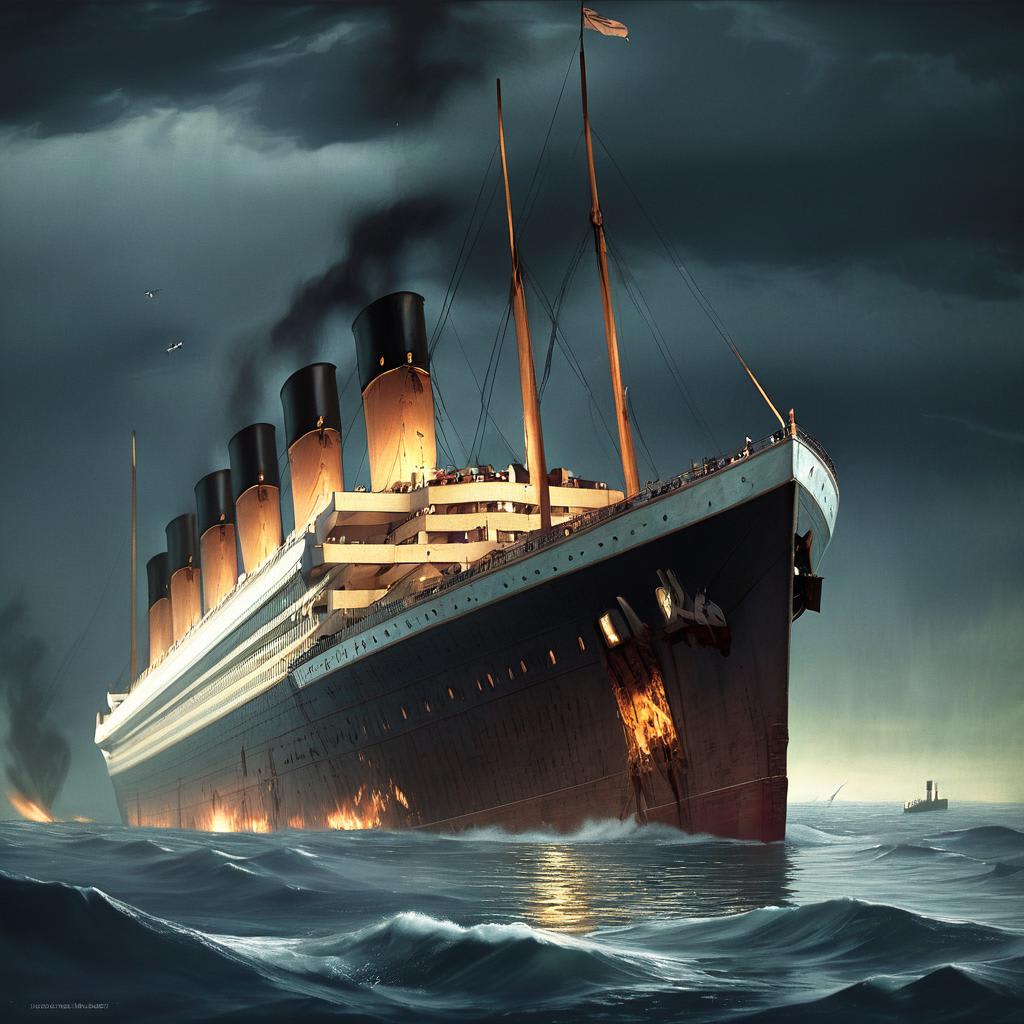The REAL story of what happened to the TITANIC.
Uncovering the TRUTH behind the TITANIC tragedy

On the night of April 14th, 1912, at 11:40 p.m., the RMS Titanic encountered a disastrous incident leading to its sinking three hours later. By 2:20 a.m. on April 15th, the grandest ship of its time had submerged beneath the cold Atlantic waters, resulting in the loss of over 1500 lives. This disaster claimed more than two-thirds of the passengers on board. While it has long been believed that an iceberg caused this catastrophe, recent scientific discoveries suggest otherwise.
Measuring 882 feet 9 inches in length, 92 feet in width, and 175 feet in height, with a volume of 46,328 tons, the Titanic was considered unsinkable. Its extensive network of passages and decks was so vast that even the ship's officers needed over two weeks to navigate it fully. The Titanic boasted four large smokestacks, each weighing 60 tons and extending 81.5 feet above the deck at a 30-degree angle for an imposing appearance. The ship's construction cost 7.5 million dollars, which is about 166 million dollars today, less than the 200 million dollars spent on the 1997 "Titanic" film.
Building the Titanic was a colossal effort, involving 3,000 workers at the Harland and Wolff shipyard. They worked six days a week from dawn, taking 26 months to complete the project. The job was dangerous, resulting in 8 fatalities and 246 injuries. Given the immense effort and resources invested, it's hard to believe an iceberg alone caused its sinking. However, recent findings indicate that a fire may have played a significant role.
Senan Molony, a journalist who has spent over 30 years researching the Titanic, discovered a substantial 30-foot black mark on the hull in pre-departure photos. These previously unseen images revealed that a fire had been burning for three weeks at a high temperature, weakening the metal by up to 75%, making the ship vulnerable to the iceberg’s impact. Without the fire, the iceberg might not have caused such extensive damage. This impact at a weakened spot was a tragic link in a chain of unfortunate events.
Despite knowing about the fire, the project's managers proceeded with the voyage to avoid financial ruin. At that time, a miners' strike had caused a coal shortage, and the Titanic’s owners had bought up all available coal, including supplies from other ships. Canceling the trip was not an option, as tickets were sold out and other voyages had been canceled. To conceal the fire damage, the ship was positioned so that the marks faced the sea, away from the docks.
The Titanic’s interior was inspired by London’s Ritz Hotel, featuring a grand staircase spanning seven of the ten decks. First-class amenities included a heated swimming pool, Turkish baths, a gym, squash courts, and a beauty salon. An onboard newspaper, the "Atlantic Daily Bulletin," kept passengers informed. Even first-class pets were catered to, with walks and training available. First-class dining was a lavish affair, with 13-course meals accompanied by various wines over a five-hour period. However, the ship's lack of binoculars was a critical oversight.
Binoculars, essential for spotting threats, were locked away, and the key was accidentally taken by second officer David Blair, who was replaced at the last minute. This meant the crew couldn’t spot the iceberg in time. Additionally, the Titanic was traveling at an excessive speed to maintain its schedule, further contributing to the disaster.
The shortage of lifeboats was another major failure. Initially planned to have 48 lifeboats, the number was reduced to 20 for aesthetic reasons, accommodating only one-third of the passengers. Lifeboat drills, which were standard practice, were canceled by Captain Edward John Smith on the day of the sinking, leading to a disorganized evacuation.
Captain Smith’s past failure in a navigation exam and the lack of lifeboats contributed to the tragedy. Distress signals sent by the Titanic were ignored by a nearby ship, the Californian, due to light refraction creating mirages that hid the signals.
The Titanic disaster was the result of negligence, tragic coincidences, and a series of unfortunate events. Whether the primary cause was fire or ice, the loss of hundreds of lives continues to captivate scientists and historians. What do you think led to the Titanic's sinking? Share your thoughts in the comments below.
About the Creator
Enjoyed the story? Support the Creator.
Subscribe for free to receive all their stories in your feed. You could also pledge your support or give them a one-off tip, letting them know you appreciate their work.






Comments
There are no comments for this story
Be the first to respond and start the conversation.